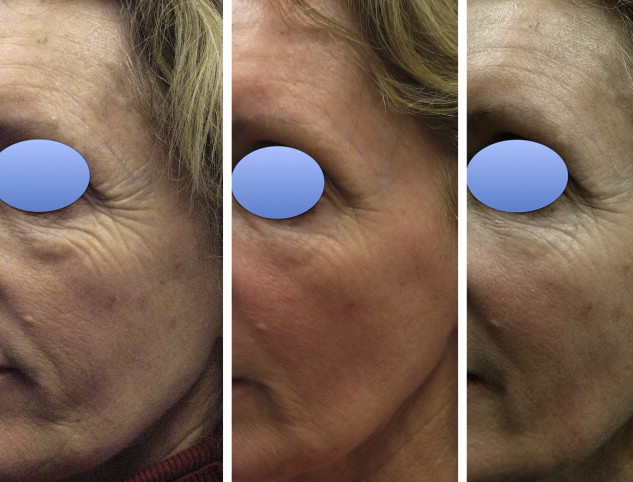The 2790-nm wavelength YSGG laser was introduced for aesthetic purposes under the trade name Pearl by Cutera in 2007. In clinical use, the Pearl superficial resurfacing laser has proved effective and well tolerated for the correction of superficial brown epidermal dyschromia and superficial fine lines and scars, and the Pearl Fractional laser produces excellent improvement in both dyschromia and improvement of deeper lines and moderately deep acne scarring. The two laser treatments can be combined in a single treatment session on different parts of the face or on the entire face, depending on patient needs and priorities.
The 2790-nm wavelength yttrium-scandium-gallium-garnet (YSGG) laser was introduced for aesthetic purposes under the trade name, Pearl, by Cutera in 2007. Like 10,600-nm CO 2 and 2940-nm erbium:yttrium-aluminum-garnet (Er:YAG) ablative resurfacing lasers, the YSGG 2790 nm uses as its chromophore water in the top 1 mm of the skin ( Fig. 1 ).
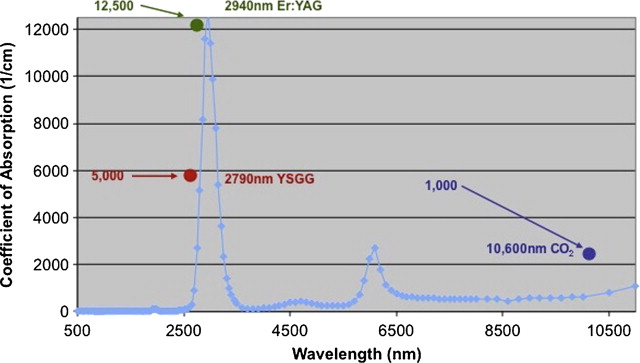
YSGG 2790 nm was chosen by Cutera because it was considered to produce a better blend of coagulation and ablation than the CO 2 laser, which deposits a large amount of coagulation-causing thermal energy in the skin for a given amount of ablation, or the Er:YAG laser, which deposits little thermal energy in the skin for a given amount of ablation ( Fig. 2 ). Some Er:YAG lasers can be made to produce a train of subpulses, which, at appropriate parameters, can produce a greater degree of coagulation in proportion to ablation ( Fig. 3 ), so approximate the ratio of ablation to coagulation created by the YSGG. All 3 types of fractional lasers are capable of penetrating more than 1 mm into the skin.
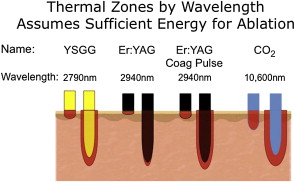
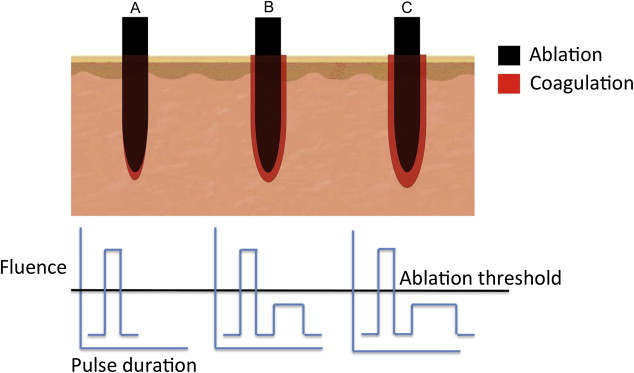
During fractional resurfacing, thermal energy is useful to the extent that it turns on repair and remodeling systems in the skin and coagulates blood vessels to limit pinpoint bleeding. Too much thermal energy can cause a burn, with attendant risks of scarring, pigment loss, and prolonged healing. Not enough thermal energy can result in reduced skin tightening and remodeling and troublesome pinpoint bleeding during the procedure.
In clinical use, the Pearl superficial resurfacing laser has proved effective and well tolerated for the correction of superficial brown epidermal dyschromia and superficial fine lines and scars, and the Pearl Fractional laser produces excellent improvement in both dyschromia and improvement of deeper lines and moderately deep acne scarring. The 2 laser treatments can be combined in a single treatment session, either on different parts of the face or on the entire face, depending on a patient’s needs and priorities ( Fig. 4 ).
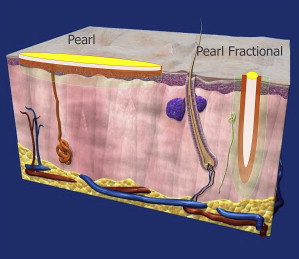
The risks of treatment using the YSGG lasers are similar to other ablative and fractional ablative resurfacing lasers. The risk of bulk heating, which can cause scarring and pigment loss, seems to be lower with YSGG than in CO 2 fractional ablative lasers and perhaps lower than Er:YAG fractional ablative systems when they are operated with a high level of coagulation. Scarring and pigment loss have been reported after fractional CO 2 laser but as of late 2010 not with Pearl fractional YSGG, probably because the Pearl Fractional ablative system delivers a lower thermal load to the skin. All fractional ablative lasers can occasionally cause superficial pitting of the skin ( Fig. 5 ), and this can persist for many months after treatment and occasionally is permanent. The cause of this pitting has not been determined, and an effective treatment protocol for it has not been defined. The risk of pitting may increase with spot size.
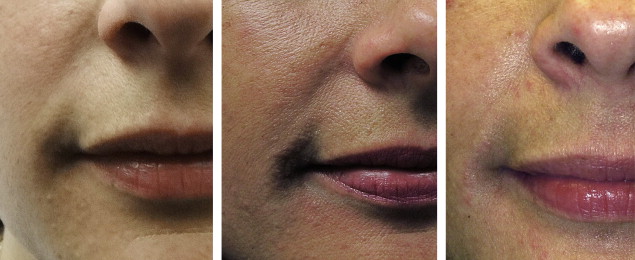
Actual use of YSGG lasers
The Consultation
When considering the range of treatments a patient might benefit from, YSGG superficial resurfacing laser comes into play with patients who have brown epidermal dyschromia and/or fine lines or superficial acne scarring Fig. 6 . Such patients might benefit from a series of 3 to 6 intense pulsed light treatments but might benefit more (and with only 1 or 2 treatments) from YSGG resurfacing.
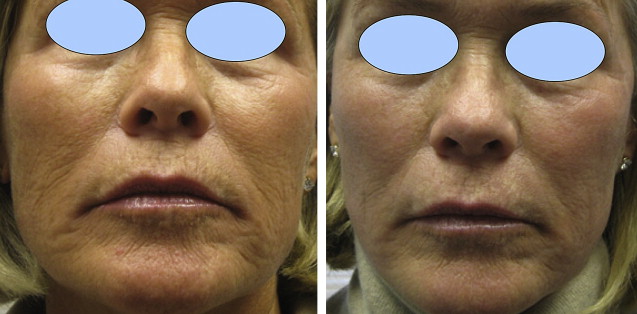
Patients need to understand that it took several years for their skin to get to the point where corrective treatment was needed, and patients need to allow approximately 4 to 5 days for sunburn-like social downtime, after which makeup can usually be worn, plus another week or two of somewhat pink skin ( Fig. 7 ). Usually, the greatest degree of inflammation and erythema occurs at 48 to 72 hours after treatment. Patients should expect that they usually see improvement by approximately 3 weeks, and maximum improvement is reached by 3 to 6 months after treatment.

